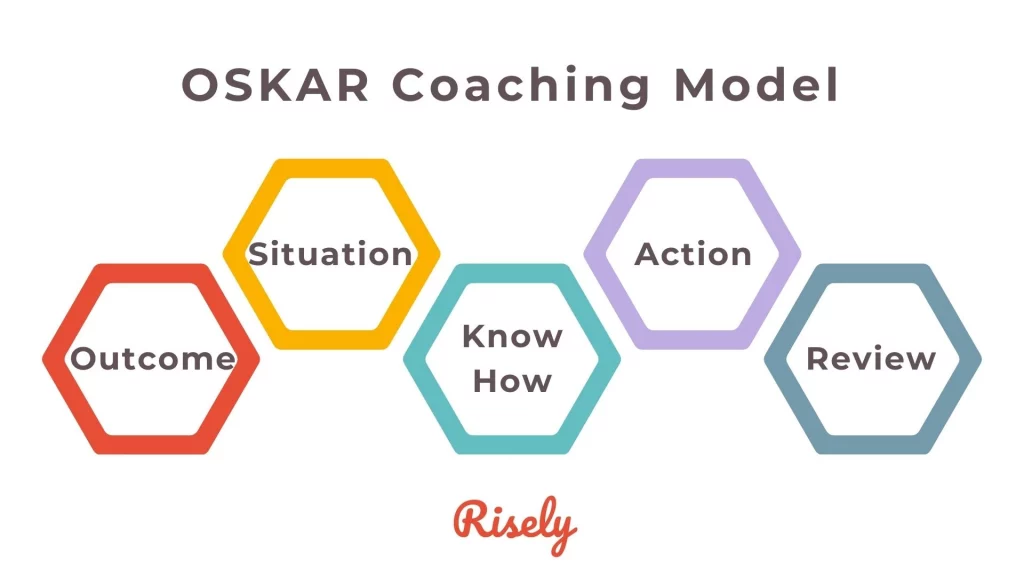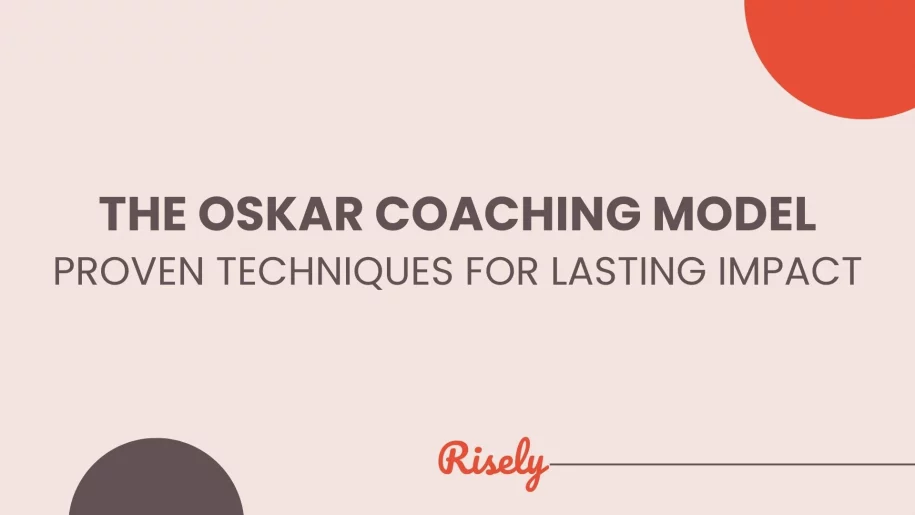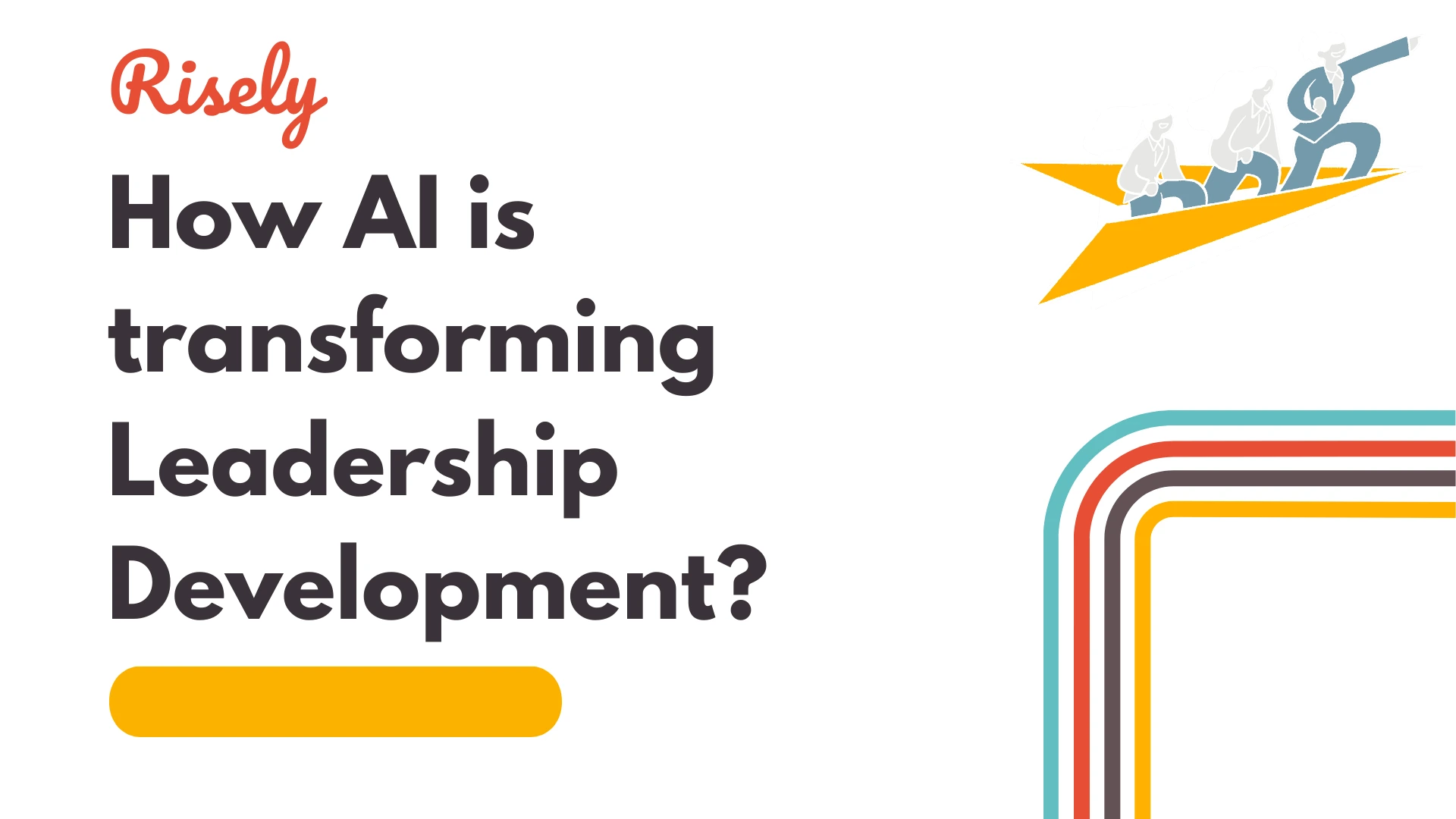The OSKAR Coaching Model: Proven Techniques For Lasting Impact
When it comes to leadership development and growing your business or organization, choosing the right coaching model is crucial for success. The OSKAR Coaching Model provides a practical and cost-effective way to assist leaders leverage their team’s strengths while staying aligned with overall business goals. Focused on clear, actionable steps and real-world results, OSKAR encourages long-term growth, accountability, and continuous improvement. In this blog, we’ll explore the key elements of the OSKAR model, its benefits, and how to implement it to enhance leadership development and drive success in your organization.What is the OSKAR Coaching Model and Why is it Significant?
The OSKAR Coaching Model is a five-step framework designed to foster growth and development within teams. It was developed by coaches Mark McKergow and Paul Z. Jackson and published in their 2002 book, “The Solutions Focus: Making Coaching and Change SIMPLE.” It builds on the GROW coaching model from the 1990s by focusing on solutions and utilizing existing resources. This model is particularly effective in leadership development, providing a tailored coaching style that meets the specific needs of your teams—especially in resource-constrained environments. Its flexibility and results-driven approach create a positive coaching atmosphere that nurtures both individual and organizational growth while incorporating elements of the GROW model.What Are the Five Components of OSKAR?
The OSKAR acronym stands for Outcome, Scaling, Know-how, Action, and Review. It emphasizes leveraging your team’s existing skills and resources to create an affordable yet effective coaching experience. This budget-friendly approach ensures that leadership development is impactful and accessible for organizations with limited resources.
- Outcome: Set SMART goals to define leadership development objectives.
- Situation: Assess your team’s current state, challenges, and resources to establish a foundation for progress.
- Know-how: Identify the skills within your team that support leadership growth.
- Action: Develop a detailed plan with steps to achieve leadership goals.
- Review: Regularly assess progress and adjust strategies to ensure continuous improvement.
How Does OSKAR Stand Out Among Other Coaching Frameworks?
The OSKAR Coaching Model stands out because of its unique blend of structure and flexibility. While it offers a clear framework, it adapts to the specific needs of your team, making it a cost-effective alternative to other leadership coaching models. Its solution-focused approach encourages teams to leverage their strengths, creating a growth mindset that drives results. By focusing on practical applications and incorporating continuous reviews, the OSKAR model establishes a feedback loop that fuels sustained development and enhances employee retention by providing growth opportunities within your organization, thus highlighting the effectiveness of the OSKAR model in coaching.A Deep Dive into the OSKAR Components
Each step of the OSKAR model is designed to offer a structured yet flexible approach to leadership development, ensuring that growth is measurable and sustainable. Let’s take a closer look at each component:1. Outcome: Setting Clear, Measurable Goals
The Outcome stage focuses on defining specific, actionable goals using the SMART framework (Specific, Measurable, Achievable, Relevant, Time-bound), leading to the desired outcome. This ensures that goals are both concrete and trackable, such as setting a goal to “increase team engagement by 20% over the next quarter.” Clear goals drive motivation and provide direction, ensuring that your efforts align with organizational objectives.2. Situation: Assessing the Current Reality
The Situation component evaluates the team’s strengths, weaknesses, and external factors that influence progress. Tools like SWOT analysis assess the current state, ensuring that your L&D strategies are relevant and realistic. For instance, a team might excel in technical skills but struggle with communication, and this assessment helps create a solid foundation for goal-setting.3. Know-how: Leveraging Existing Skills
The Know-how phase focuses on identifying and utilizing the skills already present within the team. By mapping team strengths and conducting skill assessments, you will be able to pinpoint areas that support leadership growth. This approach ensures that existing resources are used effectively and efficiently while addressing areas that need improvement.4. Action: Crafting Actionable Steps
The Action component translates leadership goals into manageable steps with clear deadlines. For instance, to boost leadership engagement, action steps might include organizing monthly training sessions or offering one-on-one coaching. Regular check-ins and celebrating small victories maintain focus and motivation, ensuring that your team stays on track.5. Review: Reflecting and Adjusting
The Review stage involves reflecting on progress since the last coaching session and adjusting strategies as needed. Regular reviews assess what’s working and where improvements are necessary. For instance, if a leadership training program isn’t yielding the desired results, feedback may indicate the need for more interactive content. Regular reviews reinforce a growth mindset, celebrate milestones, and keep your team motivated. Download the free OSKAR Coaching Model Template here!Situational Scenarios Illustrating the OSKAR Coaching Model
Let’s explore a real-world scenario that demonstrates how the OSKAR Coaching Model help you and your team grow—both in leadership and collaboration.Scenario: Fostering Team Collaboration in a Marketing Department
Let’s say you lead a marketing team that’s struggling with communication across departments. The OSKAR coaching model helps you strengthen collaboration and improve your team’s overall performance.- Outcome: Your goal is to boost collaboration and efficiency by 30% in the next quarter, measuring progress through team feedback and how quickly projects are delivered.
- Situation: Your team excels individually, but when it comes to coordinating with other departments, things tend to fall through the cracks, leading to delays and bottlenecks.
- Know-how: While everyone on the team is an expert in their field, there’s room to improve how they share information, align on goals, and work together more smoothly.
- Action: As a leader, you could introduce weekly strategy meetings where everyone shares updates and challenges. Implementing collaboration tools, like shared project management software, would help streamline communication. You could also organize team-building activities to strengthen relationships and encourage a more collaborative environment. Additionally, encouraging team members to mentor one another in areas of expertise could foster a supportive, team-oriented culture.
- Review: At the end of the quarter, you’ll review how the team has improved in communication and project efficiency. By gathering feedback from everyone, you adjust strategies and keep refining your approach to collaboration.
What Are the Benefits of OSKAR Coaching?
By applying the OSKAR coaching model, you achieve tangible results that contribute to both individual and team growth. This is how it creates measurable outcomes:Enhanced Goal Clarity and Accountability
The OSKAR coaching model ensures that your team’s goals are clearly defined using SMART criteria (Specific, Measurable, Achievable, Relevant, Time-bound). By setting clear, trackable objectives, such as “improve employee retention by 15% in the next six months” and identifying specific actions, the model eliminates ambiguity, providing a focused path forward. This clarity enables teams to remain aligned and work efficiently toward specific outcomes, improving overall performance. Regular reviews—integral to the OSKAR process and the OSKAR process framework—reinforce accountability within your team. By tracking progress, everyone remains aware of their responsibilities and milestones, maintaining focus and momentum. This ongoing evaluation drives motivation and ensures your team consistently works towards achieving shared goals, which ultimately leads to better results, including improved employee retention and performance. The OSKAR process enhances the effectiveness of these reviews, making them even more beneficial for team outcomes.Boosting Performance and Engagement
OSKAR’s solution-focused approach shifts the team’s attention from problems to strengths. The model fosters a culture of positivity, confidence, and proactive behavior by identifying and building on what’s already working well—whether it’s individual skills or past successes. Rather than allowing setbacks to demotivate your team, OSKAR encourages a mindset focused on growth and improvement, which leads to higher engagement and productivity. Let’s say, a team member excels in communication but struggles with time management. This model helps them leverage their communication strengths to mentor others while also developing time management skills. This targeted coaching is a good idea as it drives both individual growth and team success by emphasizing strengths, fostering engagement, and increasing overall team performance. Focusing on outcomes and building on existing strengths, OSKAR creates an environment where your team members feel valued and empowered. This drives greater initiative, improved performance, and ongoing growth. Consequently, you expect measurable progress in both employee retention and leadership development.How to Implement the OSKAR Coaching Model in Your Organization?
Bringing the OSKAR Coaching Model into your organization leads to long-term growth and improved performance. You integrate it successfully by:- Introduce the Model: Start with workshops or presentations to assist your team in understanding the benefits and practical applications of the model.
- Provide Training: Equip your team with the necessary tools and resources for effective implementation, ensuring the materials are relevant and actionable for real-world situations.
- Demonstrate Application: Use case studies, simulations, and role-playing exercises to show how each component translates into tangible results.
- Promote Consistent Use: Ensure uniform application across leadership initiatives by making the model a standard practice in your development programs.
- Offer Ongoing Support: Create a support system with peer coaching and regular feedback sessions to assist your team refine their approach and staying motivated.
Conclusion
The OSKAR Coaching Model is a structured, solution-focused framework that drives growth and development in your organization, benefiting every team member involved. By setting clear outcomes, assessing the current situation, leveraging team skills, creating actionable plans, and conducting regular reviews, the model enhances goal alignment and accountability, allowing for the development of each member’s action plan. Its emphasis on performance improvement, continuous development, and employee retention makes it an invaluable tool for organizations seeking to develop leadership skills and achieve long-term success.Ready To Take Steps Toward Solution-Focused Coaching?
Download Risely’s FREE template for OSKAR Coaching Model!
AI and Leadership Development: Driving Synergy for Growth
AI and Leadership Development: Driving Synergy for Growth You know the frustration all too well. Your organization invests thousands in…
How Are AI Learning Platforms Transforming Leadership Development?
How Are AI Learning Platforms Transforming Leadership Development? As an L&D leader, you’re likely familiar with this frustrating reality: 82%…
5 Essential AI Skills for L&D Leaders
5 Essential AI Skills for L&D Leaders According to LinkedIn’s 2025 Workplace Learning Report(1), 71% of L&D professionals are now…
How to Create a Course with AI: A Guide for L&D Professionals
How to Create a Course with AI: A Guide for L&D Professionals According to a McKinsey survey(1), only 11% of…
Building an Ultimate Leadership Development Action Plan
How to Build a Leadership Development Action Plan? Having a strong Leadership Development Action Plan is more critical than ever…


